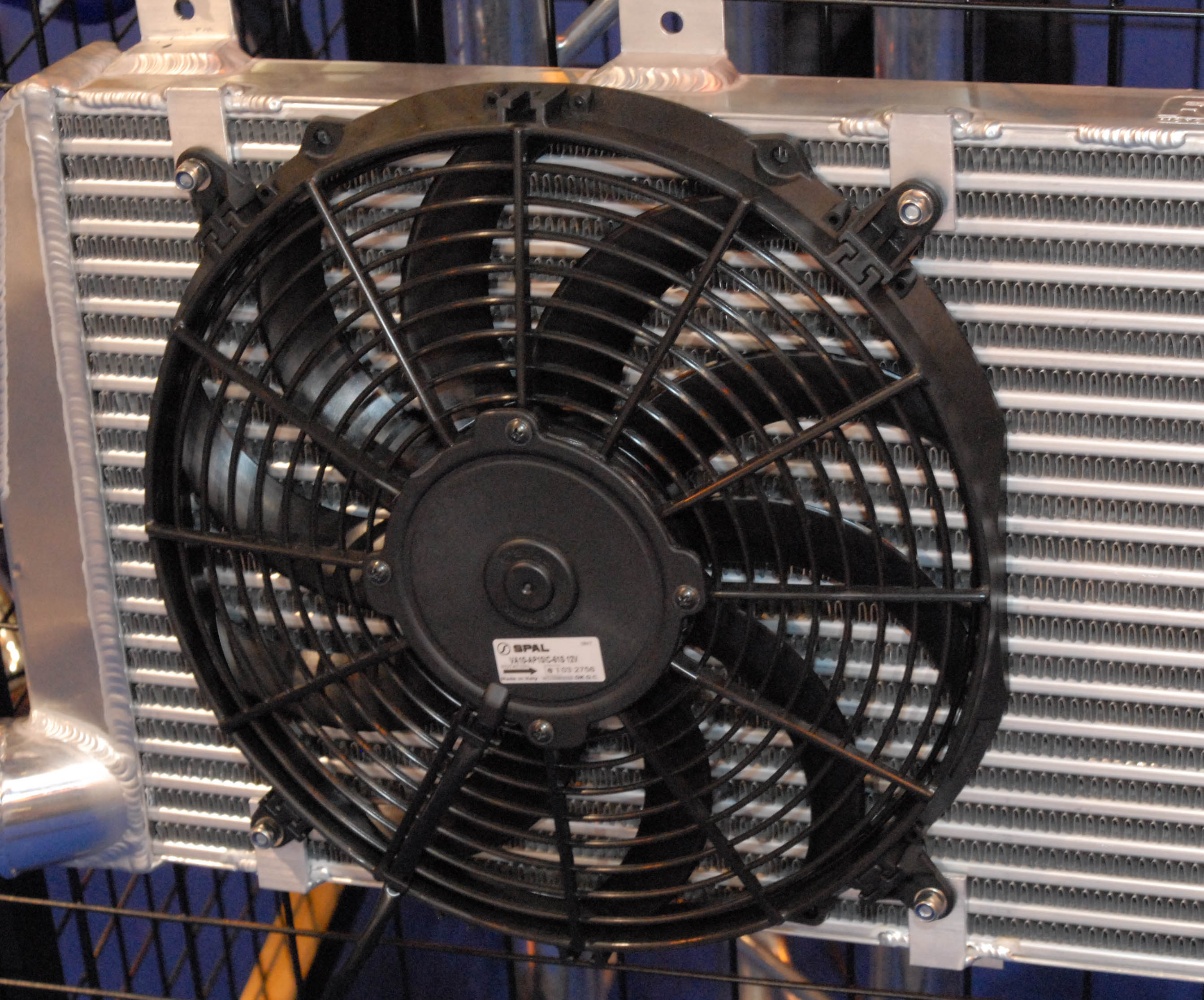Radiator fan installation
In life there are many instances where we have to make decisions based on insufficient information or experience. I mention this because in applications where we have rotating axial flow fluid movers – a cooling fan, for instance – there are times when we as engineers do not have enough data, and decisions have to be made quickly as to the effectiveness of the design or installation. These decisions may not be potentially calamitous or affect the lives of many innocent people, and in many cases if we get it wrong there will plenty of opportunity to put things right, but the big question as far as the installation of automotive cooling fans is concerned is: shall we push or pull the air through the radiator matrix?
Pushing the air through has many advantages. First and foremost, operating as a simple air pump, the performance in terms of flow rate will be most likely higher. Axial flow pumps – for in effect that is all this type of cooling fans are – are good for moving large quantities of air at low pressure differentials, and any intake pressure loss as a result of the restriction of the radiator matrix will have some effect on fan performance. Placed in front of the radiator and therefore pushing the air through with the minimum of intake restriction is a good thing. Conversely therefore, placing it behind the radiator and pulling the air against the restriction of the radiator is bad.
Positioning the fan and its electric motor in front of the radiator should also have aerodynamic benefits as well. All things being equal, and keeping the radiator in the same position in relation to the engine, it will also reduce the blockage effect, assuming the engine is mounted behind it, as in most front-engine vehicle layouts. This will reduce the effective back-pressure against the flow of air, and at the limit of its performance will minimise the chance of the air stalling through the compressor blades. At this limiting condition, not only will this create unnecessary noise but stalling of the air will drastically reduce the performance of the fan, and is a not uncommon failing in a number of fan installations I have seen.
Aside from aerodynamic considerations, there are however also the practical ones. Placing the fan along with its electrical motor in front of the radiator ensures that the motor remains as cool as possible. Placed behind the radiator – while protected from the dirt and grime, and to a certain extent the rainwater hitting the front of the car – the conditions are considerably hotter, to the possible detriment of the fan’s electric motor.
So while the decision to put the fan in front of the radiator to ‘push’ the air may appear to be the correct one, taking into account aerodynamics, the practical considerations of protecting the electric motor often rule the day, and suggest that pulling it through may be best.
 Fig. 1 - Radiator fan assembly
Fig. 1 - Radiator fan assembly
Written by John Coxon